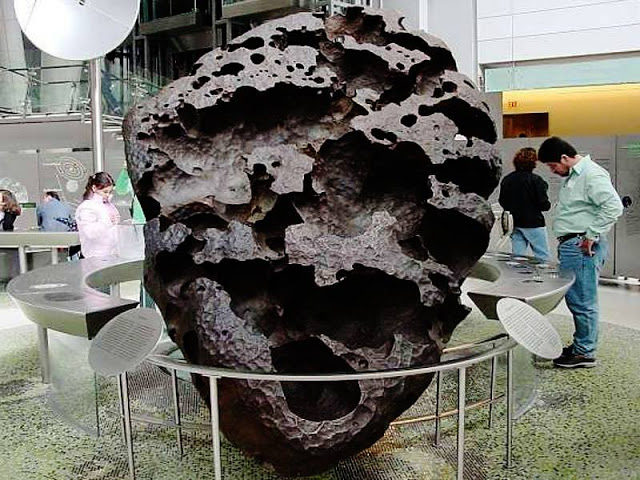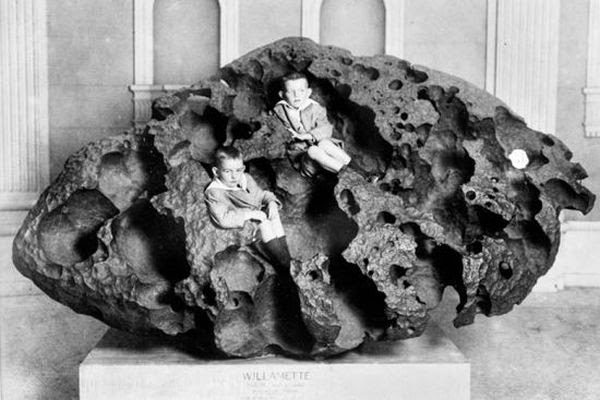
There was no impact crater at the discovery site; researchers believe the meteorite landed in what is now Canada or Montana, and was transported as a glacial erratic to the Willamette Valley during the Missoula Floods at the end of the last Ice Age (~13,000 years ago).
The meteorite is currently on display at the American Museum of Natural History in New York City, which acquired it in 1906. Having been seen by an estimated 40 million people over the years, and given its striking appearance, it is among the most famous meteorites known.
The Willamette Meteorite weighs about 32,000 pounds (15,000 kg). It is classified as a type III iron meteorite, being composed of over 91% iron and 7.62% nickel, with traces of cobalt and phosphorus. The approximate dimensions of the meteorite are 10 feet (3 m) tall by 6.5 feet (2 m) wide by 4.25 feet (1.3 m) deep.
The Willamette Meteorite contains higher concentrations of various metals that are quite rare in Earth's crust. For example, Iridium, one of the least abundant elements in Earth's crust, is found in the Willamette Meteorite at a concentration of 4.7 ppm, thousands of times more than its crustal abundance.




I know that some SOTTite will have a good theory/conclusion yeay or nay.
R.C.